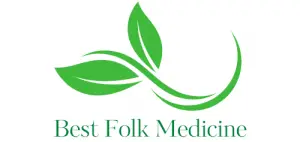Olive oil—heralded as a “liquid gold” cornerstone of healthy diets—is under threat from rampant fraud. Despite rising demand, a significant portion of olive oil labeled “extra virgin” is adulterated or mislabeled, compromising both taste and health. Nations across Europe and North America are uncovering alarming levels of fake olive oil—from refined seed oil blends to contaminated or low-grade lampante oil disguised as premium product.
If you care about your health—and what ends up in your cooking—read on. This article explores how to avoid fake olive oil, the health risks, and which popular brands to steer clear of.
The Truth About Olive Oil
A Global Crisis
The EU recorded record-high olive oil fraud in early 2024: cases of mislabeling rose from 15 in Q1 2018 to 50 in Q1 2024. Reports include oils contaminated with unauthorized substances such as pesticides and even glass fragments, as well as imported lampante oil sold as “extra virgin”.
Major Raids & Seizures
European police executed Operation OPSON in 2023, seizing over 260,000 liters of counterfeit olive oil falsely labeled as extra-virgin. The oil often consisted of lampante oil blended and mislabeled, selling millions in fraudulent products.
In Italy, authorities uncovered a criminal network selling fake extra-virgin olive oil—valued at $1 million—including chlorophyll-treated vegetable oil in branded extra-virgin packaging. Seven arrests followed.
Why It Happens
Supply constraints from drought and climate stress have slashed olive yields—causing prices to surge. These conditions create a perfect environment for adulteration and fraud.
Popular Brands Under Scrutiny
- Bertolli & Filippo Berio: Lawsuits and tests (e.g., UC Davis study) have shown these brands misrepresented origins and quality. They settled cases alleging marketing as “Imported from Italy” while oils came from multiple countries.
- Carapelli: Named in multiple investigations for being labeled “extra virgin” despite failing quality standards .
- Other major supermarket brands such as Pompeian, Star, Mazzola, and Newman’s Own have also failed blind taste tests or USDA purity benchmarks.
Based on historical consumer testing and industry reports, California Olive Ranch, Cobram Estate, Lucini, Kirkland Organic, and McEvoy Ranch are more consistently trustworthy in purity and taste.
Why It Matters: Health & Nutrition at Risk
Lost Nutritional Value
Genuine extra-virgin olive oil provides heart-healthy monounsaturated fats, antioxidant polyphenols, and anti-inflammatory compounds. When diluted with cheaper oils, these benefits vanish—and are replaced with refined oils that may contribute to inflammation.
Potential Toxins
Some adulterated oils are treated with chlorophyll, beta-carotene, or old rancid oils—posing unknown chemical exposures and decreased nutritional safety .
Consumer Deception
With misleading labels like “imported,” “pure,” or “light,” consumers are unknowingly paying top prices for substandard products. In many cases, high-end labels hide industrial seed oils or lower-grade lampante oil .
How to Spot Fake Olive Oil
| Tip | Why It Matters |
|---|---|
| Look for “extra-virgin” label, avoid “pure/light” | Only EVOO delivers maximum nutrients |
| Check harvest date (use within 18–24 months) | Freshness affects flavor and quality |
| Choose dark glass bottles or tins | Protects oil from light and rancidity |
| Select small-batch, estate, single-origin oils | Less likely to be adulterated |
| Seek certifications: NAOOA, COOC, PDO, EVOO seals | Independent testing ensures authenticity |
| Taste & smell test: peppery, fruity, slightly bitter | Fake oils often taste bland, oily, or rancid |
🛒 Which Olive Oils Can You Trust?
Consumers on Reddit and testing panels favor:
- California Olive Ranch (USA): 100% California-grown, NAOOA certified
- Cobram Estate (Australia/USA): Estate-grown, single-origin, high polyphenols
- Lucini (Italy): Estate-pressed within hours of harvest
- McEvoy Ranch, Kirkland Organic, Bariani: small-scale or organic producer emphasis
In contrast, Bertolli, Carapelli, Filippo Berio, and some supermarket “global blends” consistently face authenticity questions
Holistic, Health-Smart Buying Tips
- Buy single-origin or directly from artisan producers whenever possible.
- Store in a cool, dark place and use within 6–12 months of harvest.
- Favor dark bottles or tins to protect from light oxidation.
- Use it raw—as a finishing oil on salads, drizzle over soups, or for dipping. Heating can degrade delicate polyphenols.
- Support transparent brands offering traceability via harvest dates, estate names, and batch testing.
Final Takeaway
Fake olive oil is no longer rare—it’s pervasive. Fraudulent practices rob consumers of real nutrition and expose them to hidden toxins. To protect your health, skin, and heart, refuse to trust vague labels and cheap prices.
Stick with certified extra-virgin olive oil from reputable, traceable sources: look for dark packaging, harvest dates, and tactile flavor. Your body—and your beloved recipes—deserve nothing less than the real thing.
Sources
- The Guardian
- Italian criminal network adding chlorophyll to fake oil, arrests made [New York Post]
- Consumer testing: 69% of olive oils labeled EVOO failed tests; fake oils widespread [Time]
- How to spot fraud: cold-pressed, harvest date, certifications, sensory tests [Anya Vien]
